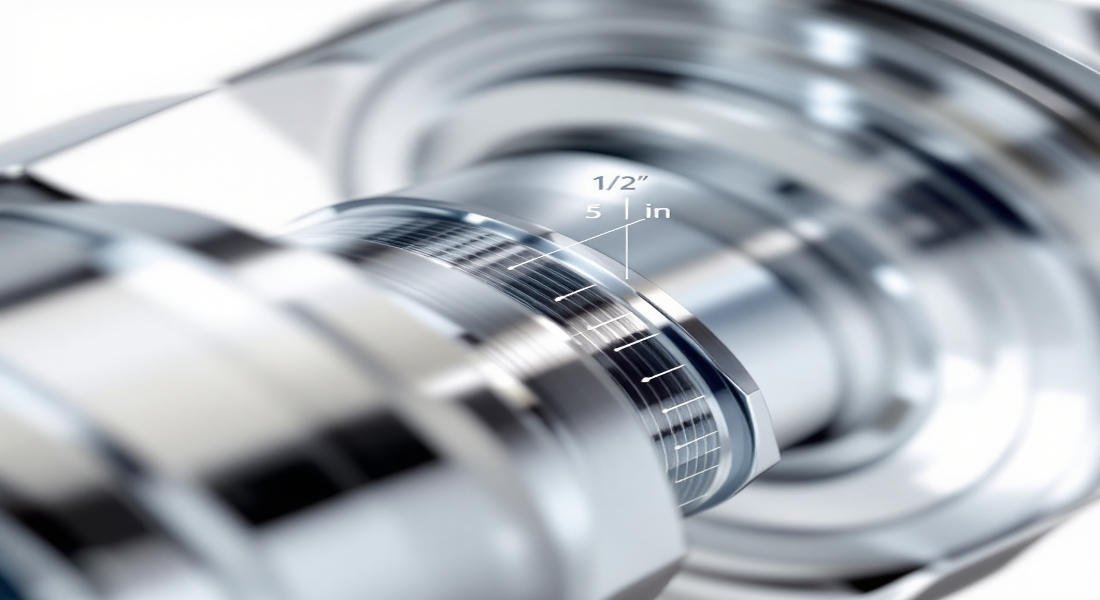Understanding every detail can make a huge difference in DIY plumbing repairs or upgrades. One of the most overlooked yet crucial aspects is the thread size of your kitchen faucet. Whether replacing an aerator, installing a filter, or attaching a hose, knowing what size thread a home kitchen faucet has is essential to ensuring a proper fit.
The Basics of Faucet Threads
Before diving into thread sizes, it’s essential to understand what faucet threads are and why they matter.
What Are Faucet Threads?
Faucet threads are the ridges or grooves found on the edge of a faucet spout or attachment. These threads allow components like aerators, adapters, or hoses to screw into place securely.
There are two main types of threads:
- Male Threads: Threads on the outside of a faucet or fitting.
- Female Threads: Threads on the inside of a faucet or fitting.
Knowing whether your faucet has male or female threads is the starting point for selecting the right components.
Common Thread Standards Used in Faucets
Faucet threads are standardized to ensure compatibility across various fixtures and parts. Here are the most commonly used thread standards:
- National Pipe Thread (NPT): Predominantly used in North America. These threads are tapered, narrowing them toward the end for a tighter seal.
- British Standard Pipe (BSP): Widely used internationally. These threads are straight or parallel, often requiring additional sealing materials like washers.
- Metric Threads: These are found in some European faucets and are less common in North America.
Understanding these thread standards is key to identifying the correct parts for your faucet, especially if you’re working with international brands.
What Size Thread Is a Home Kitchen Faucet
The question of what size thread a home kitchen faucet uses doesn’t have a one-size-fits-all answer. However, most faucets adhere to some standard sizes.
You may also read (blocked drains in your home).
Typical Kitchen Faucet Thread Sizes
For most home kitchen faucets, the following thread sizes are standard:
- Male Thread Size: 13/16 inch – 27 TPI (threads per inch)
- Female Thread Size: 55/64 inch – 27 TPI
These sizes are typical for kitchen faucets with aerators or attachments. Additionally, you may encounter:
- 3/8-24 UNS: A standard thread size for many kitchen faucets.
- 1/2-14 NPT: Commonly found in bathroom faucets but occasionally used in kitchen settings.
When looking at thread size notation, you’ll see two numbers: the diameter (e.g., 13/16 inch) and the thread pitch (e.g., 27 TPI). The thread pitch refers to the number of threads per inch and is critical for ensuring a snug fit.
Variations by Faucet Type and Brand
While standard thread sizes are prevalent, some manufacturers may use unique sizes. For example, high-end or specialized faucet brands might have proprietary thread sizes. It’s always best to check your faucet’s specifications or measure the thread size before purchasing replacement parts or accessories.
How to Measure Kitchen Faucet Thread Size
Accurate measurements are essential to ensure compatibility with replacement parts or accessories. Here’s how to measure faucet threads like a pro.
Tools Needed for Accurate Measurement
Before you begin, gather the following tools:
- Thread Gauge: Measures the thread pitch (TPI).
- Caliper or Ruler: Measures the diameter of the thread.
- TPI Gauge: Specifically designed to measure threads per inch accurately.
Step-by-Step Guide to Measuring Male Threads
- Measure the Diameter: Use a caliper or ruler to measure the outer diameter of the threads. Ensure you measure across the widest point for accuracy.
- Count the Threads per Inch: Use a thread gauge or TPI gauge to count the number of threads per inch.
- Record Your Measurements: Write down the diameter and TPI for future reference.
Step-by-Step Guide to Measuring Female Threads
- Measure the Internal Diameter: For female threads, measure the inner diameter of the thread opening using a caliper.
- Count the Threads per Inch: Use a TPI gauge to determine the thread pitch.
- Double-Check Measurements: Accuracy is key, so take measurements twice if needed.
Tips for Accurate Measurement and Common Mistakes
- Clean the Threads: Dirt or debris can interfere with measurements.
- Use Proper Tools: Avoid using makeshift tools that might give inaccurate results.
- Double-Check: Small measurement errors can lead to mismatched parts.
You may also read (do house kitchen sinks come with drains included).
Why Knowing Your Faucet Thread Size Matters for DIY Projects
Understanding what size thread a home kitchen faucet has has several practical benefits for DIY enthusiasts:
- Avoid Leaks and Poor Fittings: Incorrect thread sizes can lead to leaks and improper connections.
- Save Time and Money: Knowing the right size helps you buy the correct parts the first time.
- Ensure Compatibility: Proper thread sizes ensure compatibility with supply lines, aerators, and attachments.
For example, imagine buying an expensive water filter attachment only to realize it doesn’t fit your faucet. Knowing your thread size in advance can prevent such frustrations.
Common Faucet Thread Sizes and Their Applications
Here’s a handy table summarizing standard thread sizes and their typical uses:
Thread Size Common Application Notes
13/16″ – 27 TPI Male kitchen faucet thread , most common kitchen faucet size
55/64″ – 27 TPI Female kitchen faucet thread is often used for aerators and adapters
3/8″ –24 UNS Kitchen faucets Standard for many models
1/2″ –14 NPT Bathroom faucets are Common for bathroom setups
3/4″ -14 NPT Garden hoses, outdoor faucets, Larger threads for outdoor use
How to Choose the Right Replacement Parts Based on Thread Size
When selecting replacement parts for your faucet, consider these tips:
- Match the Thread Size: To ensure compatibility, check the diameter and thread pitch.
- Verify Compatibility: Consult the product specifications for replacement parts.
- Shop from Reliable Sources: Purchase parts from reputable suppliers or brands.
You may also read (how to get to home kitchen in hogwarts legacy).
